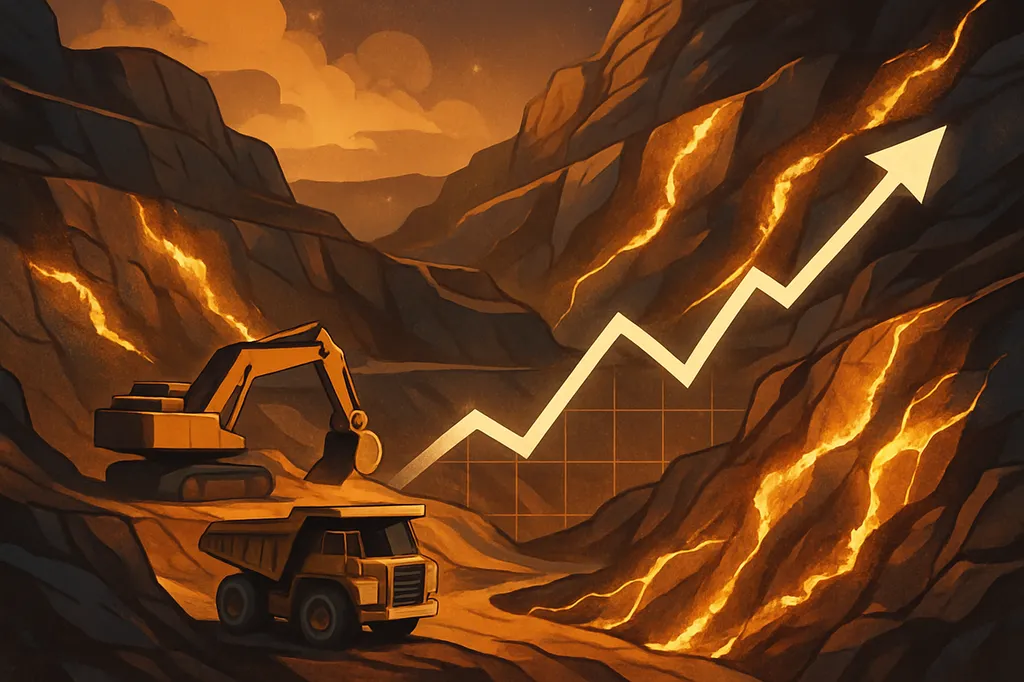The North American mining sector is navigating a complex landscape in Q3 2025, with earnings reports revealing a sector under pressure from both external demand and internal inefficiencies. The robust demand for critical minerals, driven by the global energy transition, has provided a significant tailwind, with commodity prices reaching multi-year highs. Gold futures have surged to $4,339.40 per ounce, and copper has hit $5.02 per pound, bolstering cash flows for many operators. Companies like Freeport-McMoRan (NYSE: FCX) have reported non-GAAP EPS of $0.50 and revenue of $6.97 billion, exceeding expectations despite operational hurdles. Similarly, Americas Gold & Silver (NYSE: USAS) has seen a 98% increase in silver production, highlighting the strategic value of these metals. The increased activity is also reflected in the mining equipment sector, with Sandvik reporting 16% organic growth in equipment orders, indicating accelerated capital expenditure by miners.
However, these positive trends are tempered by significant challenges. Supply disruptions, particularly chronic labor shortages across both the U.S. and Canadian mining industries, have severely constrained production capacity. Thousands of skilled positions remain unfilled, exacerbated by an aging workforce and a lack of new talent, forcing companies to re-evaluate operational strategies. Logistical hurdles further compound these issues; global supply chain volatility, including disruptions in major shipping lanes, has led to increased input costs for shipping and logistics, impacting procurement of critical equipment and consumables. Specific operational incidents have also taken their toll. Freeport-McMoRan faced a temporary halt in Indonesian operations due to a mud rush, impacting its consolidated copper sales for Q3 2025 and deferring production. Teck Resources (TSX: TECK.A) experienced lower copper production at its QB operation year-over-year due to ongoing tailings management facility development.
In stark contrast to these headwinds, government investments have emerged as a powerful catalyst, particularly in the critical minerals space. The U.S. government, determined to secure domestic supply chains and reduce reliance on foreign sources, is actively funding and partnering with mining entities. A notable initiative includes a partnership with Orion Resource Partners and Abu Dhabi’s ADQ to establish the Orion Critical Mineral Consortium, a fund potentially expanding to $5 billion for existing or near-term producing assets. Furthermore, the U.S. government has taken direct equity stakes in companies like Canada-based Trilogy Metals (TSX: TMQ), which has Alaskan interests, and Lithium Americas (NYSE: LAC), developing the Thacker Pass lithium project in Nevada. The Department of Defense has also allocated funds through the Defense Production Act to bolster rare earth supply chain development, benefiting companies such as Lynas Rare Earths (ASX: LYC), Perpetua Resources (NASDAQ: PPTA), and NioCorp (NASDAQ: NB). These strategic investments are not only providing crucial capital but also signaling a clear governmental push to accelerate domestic mining capabilities and foster supply chain resilience for materials vital to national defense and the energy transition. Canada is also actively positioning itself as a leader in this critical minerals push, leveraging its vast resources and supportive policies.
The Q3 2025 earnings season has created a distinct divide among North American miners, clearly delineating those poised to benefit from strategic government backing and those grappling with significant operational setbacks. Companies deeply entrenched in critical minerals, particularly those with projects aligned with national security and energy transition objectives, are emerging as clear winners. Perpetua Resources (NASDAQ: PPTA, TSX: PPTA) stands out as a prime beneficiary. Its Stibnite Gold Project in Idaho, which is designed to produce antimony—a critical mineral for defense applications—has received substantial government support. This includes up to $6.9 million from the U.S. Army and expedited permitting under presidential executive orders, significantly reducing regulatory hurdles and accelerating project development. Similarly, Trilogy Metals Inc. (TSX: TMQ, NYSE American: TMQ), a Vancouver-based company, received a critical boost when the U.S. government ordered its Department of War to take a 10% equity stake and help fund its Arctic copper-zinc project in Alaska. This direct investment provides substantial capital, de-risks the project, and positions Trilogy as a key supplier of essential base metals.
Lithium Americas Corp. (TSX: LAC, NYSE: LAC), another Vancouver-based entity, is also a significant winner, with the U.S. government acquiring a 5% equity stake in its Thacker Pass lithium project in Nevada. This project is vital for the burgeoning

